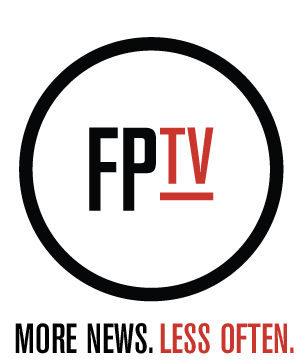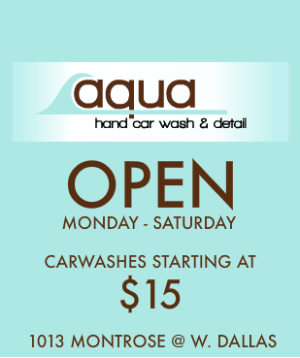Unsustainable Model: Why Free Streaming Needs To End
Spotify. Photo: David Garrick
I love music, and in turn, I love introducing the public that takes the time to read my work to new music. Twenty years ago if you would have told me that I’d find artists through an application on my phone, I would’ve laughed at you. However, now that’s how many of us interact with music and discover it as well. While I will always contend that face to face interaction between friends, colleagues, and those who work at record shops is the best form of discovery, nowadays most people use a streaming service Spotify or YouTube to find new tunes.
Now, I have nothing against Spotify or YouTube and I myself use it to link albums usually because sometimes there’s nothing like Bandcamp or the artist’s website for people to hear what I’m writing about. But, we as a music listening society are now streaming albums more than we’re downloading or purchasing physical copies of them, and it’s time for “Freemium” models like the free version of Spotify and YouTube for music to end, and here’s why: we’re essentially killing artistry.
To be fair, I pay for a streaming service with a Google Play account, and it runs $9.99 per month. Through it I can listen to pretty much anything I want to for that amount, and while I find streaming itself to be “art on the cheap,” it’s essential as a music journalist. The reasons behind this choice were ease of use, quality of sound, and the fact that Google Play pays the most per stream at $0.0073 per stream. The amounts from the streaming sites that I used came from the most current available data available, from October of last year off of the site Information Is Beautiful. The site compiled the information, available here, to make the chart below. Looking at the chart, which was made before the Apple acquisition of Beats music (though ironically, Apple Music pays less than half of the Beats amount at $0.0013 per stream). You can see that Spotify and YouTube both have the largest amount of users, while also paying out the lowest royalty rates. Both also offer free versions, in fact there isn’t a paid “all you can stream” version of YouTube to date.
It should be noted that YouTube is owned by Google, meaning that they aren’t off of the hook by paying a higher royalty per stream rate with Google Play. In fact, when you pay for Google Play, you get a free YouTube Red account included with your purchase. But it’s pretty disgusting when you realize that five very large entities devalue art so much that they aren’t willing to pay for it. The reason that these amounts are important is because that there’s no other medium like the entertainment industry, where you can pay one rate for all you can consume. And since streaming isn’t going away anytime soon, paying for what you stream is the only way to insure that artists will have the ability to continue to afford to make their art.
Here’s where this all kills artistry: money. The payouts are just as confusing as the playlists, where the biggest streams stem from how they’re curated, and who’s controlling them. To start, while Spotify claims one royalty rate, this article here tells a different story, while local bands like Bang Bangz tell a whole new story. As the article shows, the payout per stream isn’t the percentage that Spotify reports to pay, and Bang Bangz told me that off of 100,000 streams, that they received a royalty check of a little over $800. All of these figures fall short of the $0.0011 rate, and most figures today show the royalties to be closer to between $0.0004 and $0.0011 per stream from Spotify. Of course, this is before you find out the dirtiest side of the streaming giant’s world: the playlisting. If you were unaware, the three largest record labels — Sony, Universal Music, and Warner Music Group — all own a stake in Spotify. The 18% of ownership is broken down with Sony/BMG owning 5.8%, Universal Music owning 4.8%, and Warner Music owning 3.8%, as well as a 1.9% stake from EMI and the rest made up by Merlin, as per a report from The Swedish Wire. The labels have all but been confirmed — as per this article and this report from Billboard with Warner Music CEO Stephen Cooper — that the majors have a hand in curating the playlists. Meaning that aside from the fact that the revenue that Spotify brings in from advertising and monthly fees for subscribers off of an artist’s plays not only goes partially in the hands of the three largest record labels, but they decide who gets on the largest revenue streams — the playlists — as well.
While I’ve always said that streaming and Spotify in general is the “new radio,” at least major market radio stations weren’t owned by the record labels, though payola scams would often deter you from thinking that they did. What this all means is that when artists can’t earn enough to afford to record an album in a proper studio, they can ultimately either choose several narratives that aren’t good for music lovers.
Option one is to give up and walk away from the music industry entirely. Option two is to never use streaming services, thus keeping their music out of the ears of the masses. Or the worst option, option three, is watering down their music in hopes to generate more streams to earn more revenue. While initiatives from larger acts like Taylor Swift and at one time Radiohead have been to leave Spotify, the answer is solely in the hands of YouTube Music and Spotify to fix this problem through a higher royalty rate, achieved through making their service pay only.
Tidal Royalty Breakdown, Photo: Courtesy of Tidal
Killing off of the Freemium model would mean that while the cards are still stacked against independent artists, that they’d have a chance at a better rate per stream. Both Tidal and Google Play are pay-only and both have much higher per stream royalty rates than anyone else. Of the reported 100 million subscribers in the Spotify world, only 39 million are paying subscribers, meaning that the Freemium users far outweigh those who pay. This means that it’s time for 61 million people to pay up or hop off of the free music gravy train. Of course, if you buy an album from an artist at their show, or buy direct from their website, you run a chance at the artists receiving more money overall.
So, what’s the answer? I say that every artist needs some form of visibility on a goliath like Spotify, but take the big money first. If you’re an artist, your own website or Bandcamp page is the best place for your music to be online when you release anything. If you’d like to place singles from your albums on Spotify at the same time, that’s a great plan. If you release the album to Spotify and other streaming sites 30 to 90 days after the album has been released through your website or through Bandcamp, that’s a great idea as well. But if you plan to debut an album on a streaming service like Spotify or Soundcloud, you should realize that you’ll never earn back the cost of making the album itself in most cases. Unless you’re an artist who will perform for free, you have no reason to argue against these services switching to a pay only model. Can you give away your music for free? Absolutely. Are there people who have had success from giving away their music for free? Absolutely. But, look up the successful ones versus those who are not, and I promise that the successful ones are a smaller number than those who are not under the free business model.
If you’re a consumer, the answer is simple: anything worth getting your hands on is worth paying for. No matter what streaming platform you decide, paying for it is always better than getting it for free. If you’re willing to pay for the small amount of content on a site like Netflix for $7.99 a month, then paying $9.99 a month for any album you want to listen to at any given time is a bargain. In a world where music can go down an uninspired rabbit hole as fast as it can go to the most creative spaces, starting to pay for streaming music versus using a Freemium model is the only way to insure that music will always stay creative, and that everyone gets at least a larger piece of the pie. As it stands under this free model, no one who writes or performs music stands to win, and the unsustainable model needs to go the way of the buffalo and fast.













![FPH_2016_AdPackage_Lovebuzz_420x75-FeaturedBanner[Mobile]](../2016/08/wpimages_subdomain/FPH_2016_AdPackage_Lovebuzz_420x75-FeaturedBannerMobile.png)



